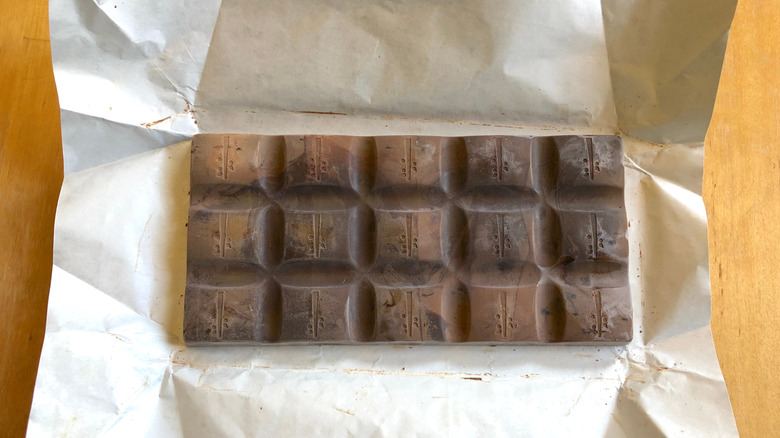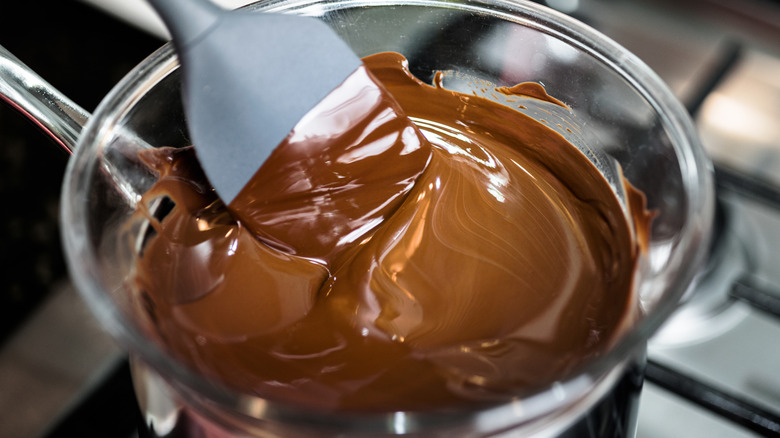What Is The White Coating That Appeared On Your Chocolate?
We may receive a commission on purchases made from links.
Have you ever unwrapped a piece of chocolate only to find it coated with a mysterious white layer of ... something? If you've wondered whether it's mold or if the chocolate has otherwise gone bad, rest assured that it's almost certainly neither. That white coating is known as bloom, and it's a common occurrence in chocolate. Chocolate bloom comes in two forms: sugar bloom or fat bloom. Both types result from how the chocolate is stored or handled, but they look and feel slightly different.
Sugar bloom occurs when moisture interacts with the chocolate. The water dissolves some of the sugar and, as it dries, the sugar recrystallizes on the surface and leaves behind a grainy white residue. Sugar bloom is most common when chocolate is exposed to humid environments or quick temperature changes.
Fat bloom happens when the cocoa butter in chocolate melts and then resolidifies improperly. This often occurs if the chocolate is stored in a warm area and then cools down unevenly. The result is a smooth, cloudy layer on the chocolate.
Can you eat chocolate bloom?
The good news is that bloomed chocolate is perfectly safe to eat. The texture might be slightly different — grittier with sugar bloom or waxy with fat bloom — but the flavor is generally unaffected. That said, bloom can affect how chocolate melts, so if you're using it for recipes, it might not behave as expected.
To avoid bloom, store your chocolate properly in consistently low humidity and even temperatures. To keep it cool and dry, aim for a consistent temperature around 60–70 degrees Fahrenheit in a low-humidity environment. Keep those conditions consistent, too, as rapid changes from warm to cool can trigger fat bloom. Use airtight containers to protect chocolate from moisture, which can also lead to sugar bloom. These mini airtight food storage containers are perfect for chocolate confections.
If the bloom bothers you, you can melt and retemper the chocolate to restore its smooth appearance. This is especially useful if you're using the chocolate for baking decoration or making confections. You can also thin out the chocolate with oil for dipping fruit, marshmallows, or pretzels. Ultimately, though bloomed chocolate might look a little strange, it's still safe and enjoyable, even more so paired with a nice rum or bourbon as part of your next dessert course.

